| New York
Architecture Images- Central Park The Arsenal |
|||||
|
architect |
Martin E. Thompson | ||||
|
location |
Fifth Ave at E64. | ||||
|
date |
1847-51 | ||||
|
style |
medieval fortress Government | ||||
|
construction |
|||||
|
|
The Arsenal was built in 1848 by the State of New York to store munitions. serves as headquarters for the City of New York Department of Parks & Recreation. The murals in the lobby, which is open to the public, depict scenes of Old New York and were painted during the Depression by artists funded by the federal Works Progress Administration (WPA) program. Also, the Arsenal's Central Chamber on the third floor hosts regular painting, sculpture and photography exhibits relating to New York and its parks. | ||||
|
|
Welcome to the historic Arsenal Building! Located at 64th Street and Fifth Avenue in Central Park, the Arsenal is home to the City of New York/Parks & Recreation, the Central Park Administrator, the City Parks Foundation, the Historic House Trust, the New York Wildlife Conservation Society, the Parks Library, and the Arsenal Gallery. The Arsenal is one of two buildings within the park's borders which predate the park itself (the other is a blockhouse at the north end dating from the War of 1812). It was built between 1847 and 1851 by the State of New York as a storage repository for munitions; the previous state arsenal had been located in Madison Square Park. The project's funding was overseen by state comptroller Millard Fillmore, who later became President of the United States. Designed by architect Martin E. Thompson, the crenelated structure, originally stuccoed, and marked by a crenulated cornice, resembles a medieval fortress. Its doorway is guarded by a cast-iron eagle made by the Daniel Meeker Foundry of Newark, New Jersey. The building's military use proved short-lived. Between 1853 and 1856, the State seized the land under it for a public park. In 1857 the City purchased the Arsenal for $275,000, removed all arms, and established park administrative functions on the premises. Certain park advocates and urban observers felt the structure was a blight on the landscape, most notably diarist George Templeton Strong who in 1859 referred to the "hideous State Arsenal Building," and hoped "this eyesore…[would] soon be destroyed by accidental fire."
This was not to be, and over the ensuing decades the building served diverse roles. In 1857 the 11th police precinct was stationed here. The newly created American Museum of Natural History took up residence at the Arsenal from 1869 to 1877, before its current home was built on Central Park West. Exhibits were installed on the second and third floors. Also at this time, B. Waterhouse Hawkins, an eminent British paleontologist, spent time reconstructing the skeletal remains of dinosaurs in a special studio established at the Arsenal. Beginning in 1859, a burgeoning menagerie was located in and around the Arsenal. Gifts or loans of animals by the likes of impresario P. T. Barnum, financier August Belmont and Civil War general William Tecumseh Sherman could be seen in outdoor cages and in the basement of the building. The "great insecurity and danger" of this arrangement, as well as the stench, resulted in the removal of the interior cages by 1871. Over time the Arsenal has become a parks fixture, appearing on occasion in fictional feature films. In 1967 the Arsenal was designated an official New York City Landmark. The bronze eagles which presently flank the third floor entrance and conference room arrived in 1981; they were secured after repeated acts of vandalism necessitated their removal in 1962 from the Prison Ship Martyrs Monument in Fort Greene Park, Brooklyn. Since the early 1980s, the central chamber on the third floor of the building has been used as a gallery and space for public forums. Eight to ten exhibitions of fine arts and photography are mounted annually, and preference is given to shows concerned with the natural environment, urban issues and parks history. The gallery may be reserved for private and public functions. |
||||
|
images |
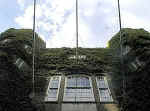 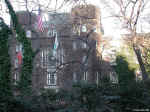 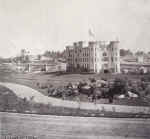 |
||||
|
|
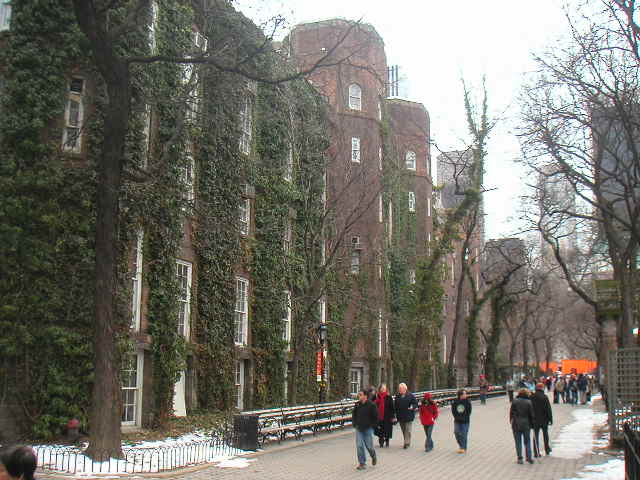 |
||||
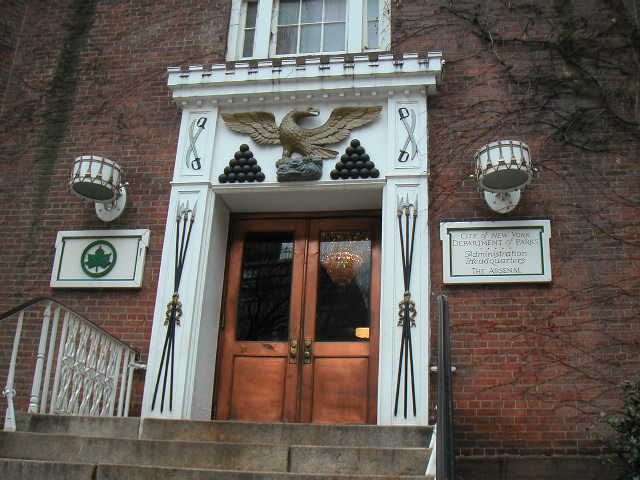 |
|||||
|
links |
thanks to www.centralpark2000.com & www.centralparknyc.org |